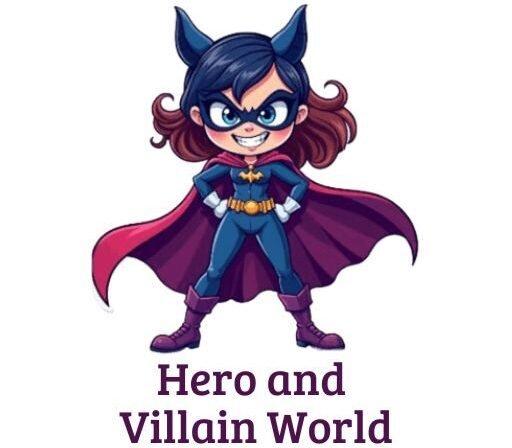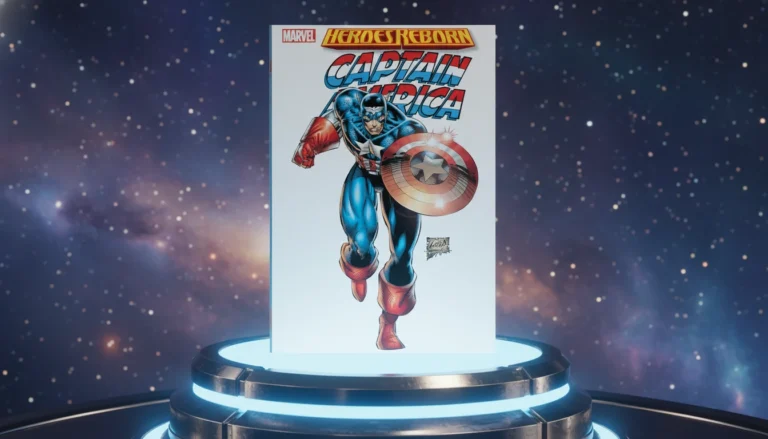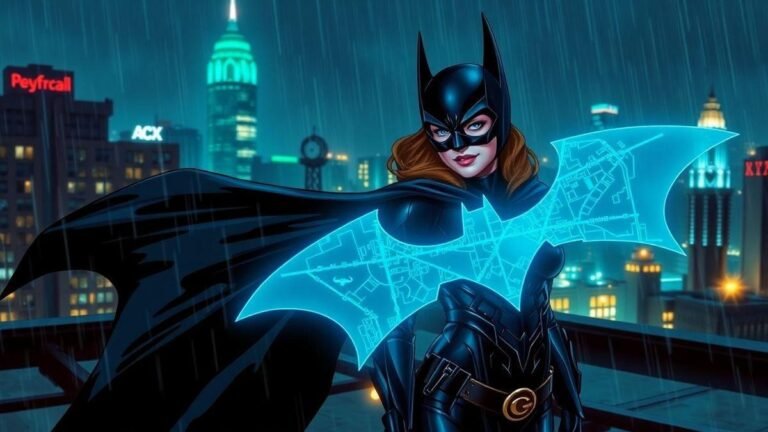Pulps Influence Early Comics
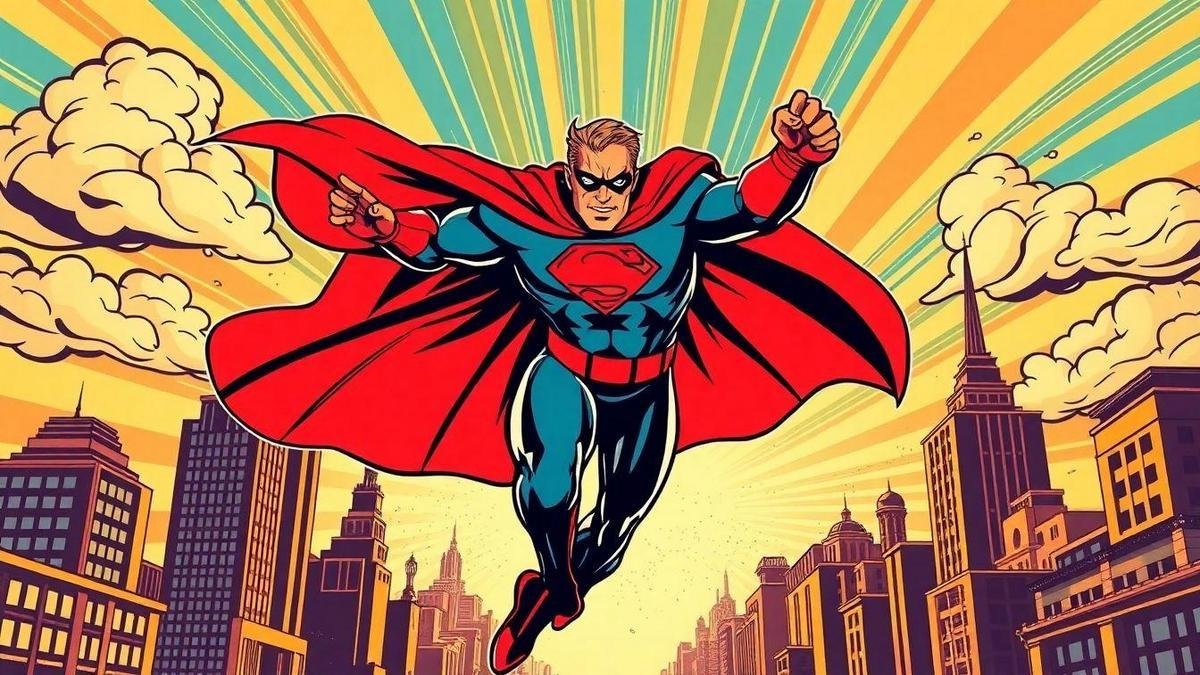
Pulps influence early comics in ways you might not expect! In this article, you’ll discover how the thrilling world of pulp magazines shaped the origins of comic books. Get ready to dive into the exciting styles, character archetypes, and storytelling techniques that transformed the comic book landscape.
From the vibrant art styles to the unforgettable characters, you’ll see how pulp fiction played a key role in creating the comics we love today.
Main Points to Remember
- Early comics were inspired by pulp magazines.
- Pulp stories featured heroes and adventures.
- Colorful art captivated young readers.
- Comics helped shape pop culture trends.
- They connected with fans in new ways.
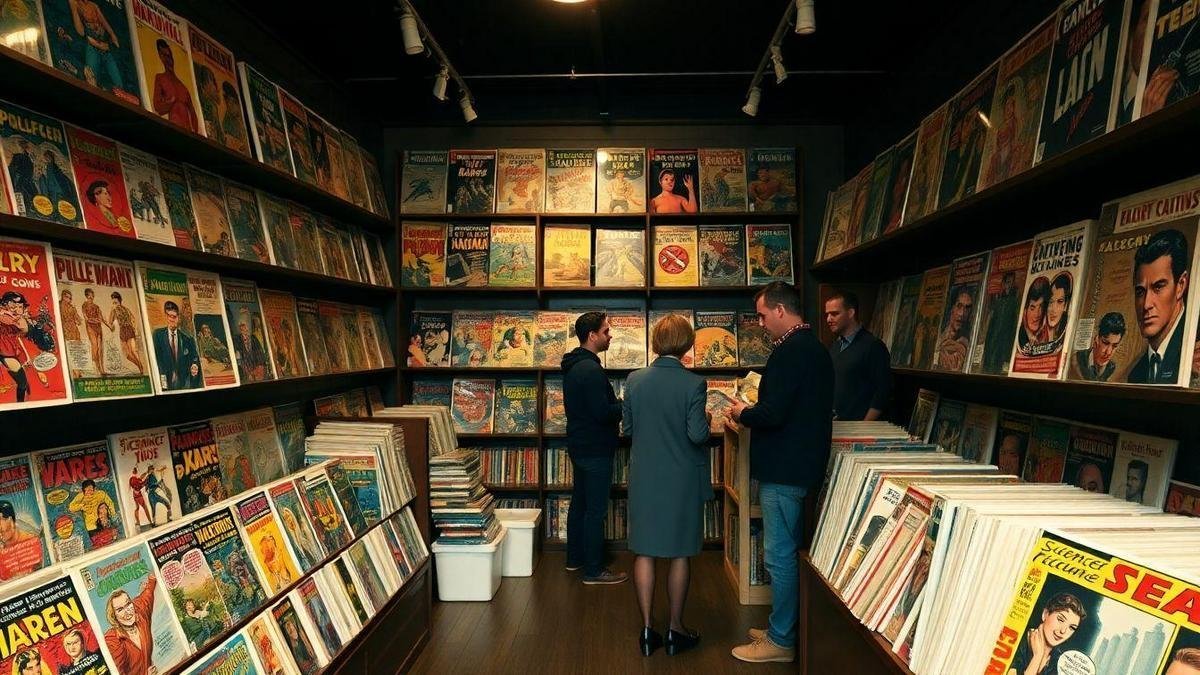
The Connection Between Pulp Magazines and Early Comics
How Pulp Magazines Shaped Comic Book Origins
Pulp magazines played a huge role in the birth of comic books. Back in the early 20th century, these magazines were packed with thrilling stories and eye-catching art.
Writers and artists took inspiration from the adventures and characters found in pulp fiction. This helped to spark the creativity that would lead to the first comic strips and comic books.
Many early comic book heroes, like Superman and Batman, were influenced by the larger-than-life characters in pulp stories. They shared similar traits, like courage and a desire to fight for justice. Just like the heroes in pulp magazines, comic book characters had to face dangerous villains and exciting challenges.
The Role of Pulp Fiction in Visual Storytelling
Pulp fiction was all about telling stories in a way that grabbed your attention. It used vivid descriptions and thrilling plots to keep readers on the edge of their seats. This style carried over to early comics, where artists used bold illustrations and dynamic layouts to tell their tales.
In comics, the combination of images and words created a new way to tell stories. Just like in pulp magazines, the visuals helped readers connect with the characters and their adventures. This blend of art and storytelling made comics a popular choice for readers of all ages.
Understanding the Influence of Pulp Art Style
The art style of pulp magazines had a big impact on early comics. Artists borrowed techniques from pulp covers, such as dramatic poses and vibrant colors. This helped to create a sense of action and excitement in comic books.
Here’s a quick look at how pulp art influenced comics:
| Pulp Art Elements | Comic Book Influence |
|---|---|
| Bold colors | Eye-catching covers |
| Dramatic poses | Action-packed panels |
| Strong characters | Memorable superheroes |
This table shows how the elements of pulp art helped shape the look and feel of early comics. The energy and style of pulp magazines set the stage for the comic book industry we know today.
Pulp Character Archetypes in Comic Books
Recognizing Common Archetypes from Pulp Fiction
Pulp fiction has shaped the characters we see in comic books today. You might recognize some classic archetypes like the hard-boiled detective, the daring adventurer, or the mysterious femme fatale. These characters often have clear traits that make them stand out.
Here’s a quick look at some common pulp archetypes:
| Archetype | Description |
|---|---|
| Hard-Boiled Detective | A tough, no-nonsense sleuth who tackles crime head-on. |
| Daring Adventurer | A brave hero who explores uncharted territories. |
| Mysterious Femme Fatale | A captivating woman who often leads men to danger. |
| Mad Scientist | A brilliant but unhinged inventor creating chaos. |
| Loyal Sidekick | The devoted friend who supports the hero through thick and thin. |
These archetypes have become staples in comics, giving readers characters they can easily relate to or root for.
How These Archetypes Enrich Early Comics
The influence of pulp characters is evident in early comic books. These characters brought excitement and drama, making stories more engaging. You’ll find that each archetype adds a different flavor to the narrative.
For instance, the hard-boiled detective often faces moral dilemmas, which adds depth to the story. Meanwhile, the daring adventurer takes you on thrilling journeys, sparking your imagination.
These archetypes also help in building strong plots. They provide a framework that writers can build upon. This means that early comics were not just about superheroes; they were about complex characters with real struggles.
The Lasting Impact of Pulp Characters on Comics
The impact of pulp characters on comics is undeniable. They’ve laid the groundwork for countless stories and heroes. Many modern comics still borrow from these archetypes, showing their enduring appeal.
For example, think of how many superheroes have a sidekick. This idea stems from the loyal sidekick archetype found in pulp fiction. Even today, comic book readers connect with these characters because they feel familiar.
In essence, pulps influence early comics by providing a rich tapestry of character types. This variety keeps readers coming back for more, eager to see how these archetypes evolve in new stories.
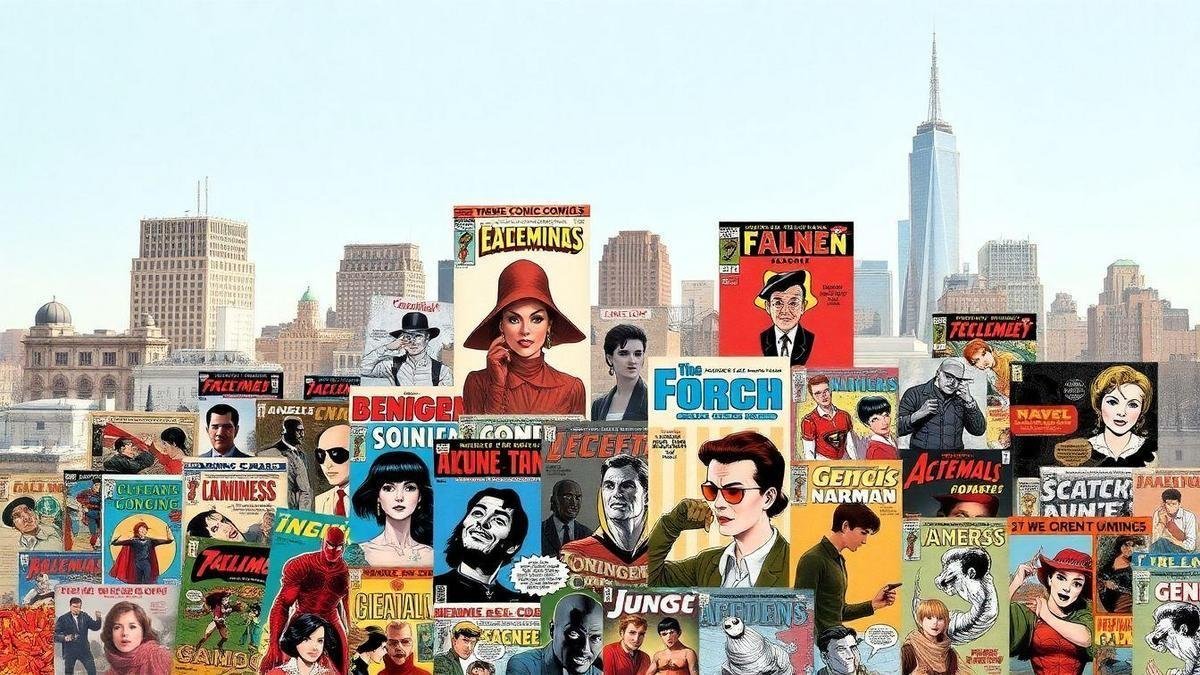
The Evolution of Graphic Narrative Influence
How Pulp Stories Changed Comic Book Storytelling
Pulp stories were like the wild west of storytelling. They were filled with action, adventure, and a dash of mystery.
These tales grabbed your attention and didn’t let go! They introduced characters that jumped off the page, like daring detectives and brave heroes. This was a big change for comic books. They started to borrow ideas from these pulpy tales.
You might have noticed how comic book plots became more exciting and dynamic. Instead of just simple stories, comic books began to weave complex narratives. They focused on character development and emotional arcs.
The influence of pulps helped comic book writers create stories that were not just about the action, but also about the feelings of the characters.
The Shift from Pulp to Comic Book Formats
As time went on, the world of storytelling shifted. Pulp magazines were popular, but comic books began to take center stage. They offered a new way to enjoy stories with their colorful illustrations and easy-to-read formats.
This shift was significant. It allowed readers to dive into stories more quickly. You could flip through the pages and get lost in the colorful art and exciting plots. Comic books became a staple for many, and the influence of pulps was still felt. They laid the groundwork for the adventures and heroes you see in comics today.
| Aspect | Pulp Stories | Comic Books |
|---|---|---|
| Format | Magazines | Comic strips and books |
| Reading Experience | Text-heavy | Visual storytelling |
| Character Focus | Archetypal heroes | Deep character arcs |
| Themes | Action and adventure | Diverse genres |
Exploring Genre Crossover in Early Comics
One of the most exciting things about early comics was their ability to mix genres. Just like a chef blending flavors, comic creators took elements from different genres and combined them.
You could find detectives teaming up with superheroes or sci-fi characters meeting fantasy beings. This mash-up created a vibrant tapestry of storytelling.
For example, think about how Batman often crosses paths with fantasy characters like Wonder Woman. This genre crossover was inspired by the pulps, which often featured multiple genres in one story. It made the stories more interesting and kept you on your toes, wondering what would happen next.
The Artistic Styles Derived from Pulp Magazines
Key Visual Elements from Pulp Art Style
Pulp magazines were all about bold visuals and dynamic storytelling. You could spot them from a mile away! Here are some key elements that made pulp art stand out:
- Bright Colors: Pulp covers used vivid hues to grab attention.
- Dramatic Characters: Heroes and villains had exaggerated features, making them larger than life.
- Action Scenes: You’d often see characters in the middle of high-stakes action, creating a sense of urgency.
- Intriguing Titles: The titles were catchy and often a bit wild, inviting readers into the stories.
These elements not only drew readers in but also set the stage for the artistic styles that would later influence comic books.
How These Styles Influenced Early Comic Artists
Early comic artists were like sponges, soaking up the inspiration from pulp magazines. The influence was clear as day. Here’s how pulps influenced early comics:
- Character Design: Artists borrowed the dramatic flair of pulp characters, creating superheroes that popped off the page.
- Storytelling Techniques: The fast-paced narratives of pulp stories translated into comic book panels, making stories quick and exciting.
- Cover Art: Just like pulp magazines, comic book covers became a canvas for eye-catching art that promised adventure.
Many early comic creators were inspired by the thrilling stories and vibrant illustrations of pulps, leading to a new era in comic art.
The Blend of Art and Story in Comic Book History
The magic of comics lies in how they combine art and storytelling. Pulp magazines laid the groundwork for this blend. Here’s how:
| Element | Pulp Magazines | Early Comics |
|---|---|---|
| Visual Style | Bold, colorful, and dynamic | Bright, exaggerated, and lively |
| Narrative Pace | Fast and engaging | Quick and action-packed |
| Character Depth | Larger-than-life personas | Heroes with backstories |
This table shows how pulps influence early comics by merging art with narrative. The exciting visuals and gripping tales created a new way for readers to engage with stories, making comics a beloved medium.

Pulp Magazines and Their Role in Comic Book Popularity
The Rise of Comic Books in the Shadow of Pulp Fiction
Comic books and pulp magazines are like two sides of the same coin. Back in the early 20th century, pulp magazines were all the rage. They were filled with thrilling stories, wild adventures, and captivating characters.
As these magazines gained popularity, they paved the way for comic books to emerge. You could say that comic books were born in the shadow of pulp fiction.
The stories in pulp magazines caught the eyes of many. They featured everything from mysteries to sci-fi, and superheroes began to pop up. This excitement spilled over into comic books, leading to a rise in their popularity. People wanted more of those fantastic tales, and comic books were ready to deliver.
How Pulp Magazines Attracted New Comic Readers
Pulp magazines had a knack for grabbing attention. Their vibrant covers and exciting plots drew readers in. Here’s how they helped create new comic fans:
- Visual Appeal: The covers were colorful and eye-catching, making readers curious.
- Diverse Genres: There was something for everyone—mystery, horror, adventure, and more.
- Short Stories: These quick reads made it easy for people to dive in and enjoy.
This mix of attraction kept readers coming back for more. They would finish a pulp story and then look for comic books with similar themes or characters.
The Impact of Pulp on Comic Book Sales
The influence of pulp magazines on comic books was huge. They not only helped create a new audience but also boosted comic book sales. Here’s a simple breakdown of how pulps influenced early comics:
| Aspect | Pulp Magazines | Comic Books |
|---|---|---|
| Content | Thrilling stories | Visual storytelling |
| Audience | Diverse readers | Expanding fan base |
| Sales Growth | High demand | Increased popularity |
| Character Creation | New heroes and villains | Inspired comic book characters |
As you can see, the connection between pulps and comics is clear. The excitement of pulp magazines helped comic books find their place in the hearts of many readers.
Lasting Legacies of Pulp Influence on Modern Comics
How Pulp Influences Today’s Comic Book Characters
Pulp fiction laid the groundwork for many of your favorite comic book characters. Think about the bold heroes and villains you see today.
They often have roots in the pulp era, where larger-than-life figures like The Shadow and Doc Savage made their mark. These characters were all about action and adventure, and they were designed to grab your attention right from the start.
You might notice that many modern heroes have a complex backstory. This is something that pulp stories embraced long ago. Characters were often flawed, making them relatable. For example, Spider-Man’s struggles resonate with many fans today, much like how pulp heroes faced their own battles.
The Ongoing Connection Between Pulp and Graphic Novels
The connection between pulp and graphic novels is as strong as ever. Pulp stories often featured vivid illustrations that told a story just as much as the words did. Today, graphic novels carry on this tradition with stunning artwork and engaging plots.
Here’s a quick look at how pulp influences graphic novels:
| Aspect | Pulp Fiction | Modern Graphic Novels |
|---|---|---|
| Illustrations | Bold and eye-catching | Detailed and expressive |
| Character Depth | Flawed, relatable heroes | Complex characters with backstories |
| Storytelling | Fast-paced and thrilling | Layered narratives |
You can see how the essence of pulp fiction is woven into the fabric of graphic novels, keeping the spirit alive for new generations.
Recognizing Pulp’s Enduring Legacy in Comics
When you flip through your comic book collection, take a moment to appreciate the pulp influence. It’s everywhere! From the dynamic action sequences to the rich character development, pulp has shaped the very way stories are told in comics.
Many comic book creators today draw inspiration from the pulp era, crafting stories that honor those early works. For instance, series like The Rocketeer and Lady Snowblood pay homage to the pulp style, celebrating its action-packed storytelling and unique aesthetics.
Conclusion
In wrapping up, it’s clear that pulp magazines have left an indelible mark on the world of comics. From their vibrant art styles to the character archetypes that continue to resonate today, pulps were the bedrock upon which modern comics were built. They breathed life into dynamic storytelling, paving the way for characters that leap off the page and into our hearts.
So, the next time you pick up a comic book, remember the rich history that shaped it. The influence of pulp is like a thread woven through the fabric of comic book culture, reminding us of where it all began. Don’t you just love how stories evolve yet retain their roots?
If you’re hungry for more fascinating insights, head over to Hero and Villain World for a treasure trove of articles waiting just for you!
Frequently Asked Questions
Pulps brought bold stories and colorful artwork. They inspired comic creators to create unique characters and thrilling plots.
Pulps are cheap magazines full of action, adventure, and mystery. They were popular in the early 20th century.
Pulp stories featured heroes like detective noir, cowboys, and science fiction adventurers. These characters shaped the early comic book world.
Pulps helped set the stage for modern comics. Their cool stories and exciting art styles still influence comic makers today.
Yes! Many modern comics pay homage to those classic pulp stories. You can see old themes and styles brought back to life!
